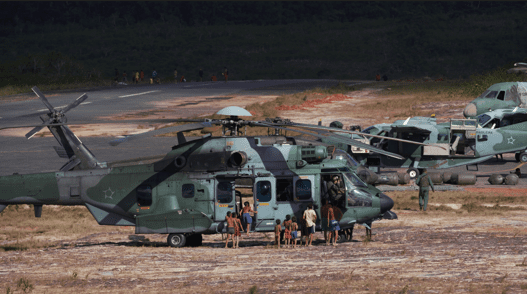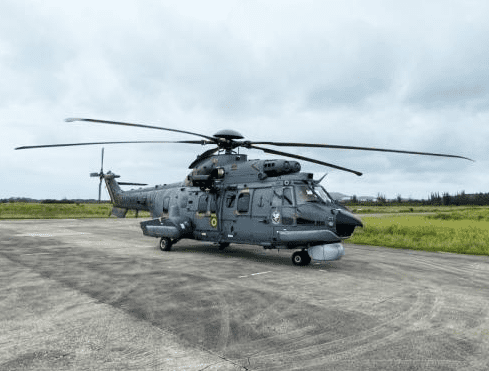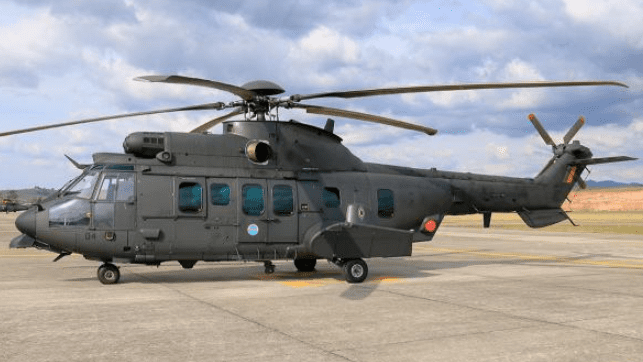The aircraft are widely used in humanitarian aid operations due to their ability to access remote and difficult-to-access areas quickly, in adverse conditions, at any time of the day or night, even in bad weather
The Amazon Joint Operational Command (Cmdo Op Cj Amz), based at Boa Vista Air Base (BABV), has received an increase of new helicopters for direct action in Operation Yanomami Shield 2023. They are the UH-15 Super Cougar from the Brazilian Navy (MB), the HM-4 Jaguar from the Brazilian Army (EB), and the H-36 Caracal from the Brazilian Air Force (FAB). The vectors will be added to the fleet in order to enhance the aerologic transport missions, considerably increasing the operational capabilities for the fulfillment of missions.

The aircraft are used in humanitarian aid operations due to their capacity to quickly access remote areas with difficult access, under adverse conditions, at any time of the day or night, even in bad weather. They are also used to transport supplies, rescue teams, and medical aid to affected areas. In addition, they are useful for evacuating injured or sick people from inaccessible areas for proper medical treatment, as has been done in Operation Yanomami, which has already exceeded 20 days of operation.
According to the Commander of Cmdo Op Cj Amz, Air Major Brigadier Raimundo Nogueira Lopes Neto, despite the difficulties encountered in the beginning of the operation, especially with the conditions of the Surucucu runway, which prevented the landing of large aircraft, the presence of the helicopters H-60 Black Hawk and HM-2, of the FAB and EB, respectively, were already capable of carrying out the mission, distributing food baskets to the various villages, as well as performing aeromedical evacuations of indigenous people in need of medical attention.

“We prepared ourselves for a much more severe and chaotic environment than the one we found here. We managed to cope with the situation, even though the runway was limited, it didn’t make it impossible for us to provide support to meet the demands of all the agencies that work in partnership in this operation, precisely because of the capacity of the aircraft we employed, whether launching or distributing materials. In other words, even with the difficulty due to the runway, even if the work is not yet finished, we keep the necessary services”, emphasizes the General Officer.

Rotor Wing Capacity
The three rotary wing aircrafts have a higher cargo capacity than the other aircrafts already in operation. The vectors can carry around 2.5 tons in the cargo cabin or up to 3.5 tons – which corresponds to more than 200 food baskets – on the outside, hanging from the cargo hook. The cabin is also differentiated, with a larger space able to carry up to 28 passengers or, still, install up to 11 stretchers and seats for a medical team, with four people. The interior of the aircraft has the signaling lights for the launching of parachutists.
Since the beginning of the operation and taking off from BABV, the A-29, E-99, R-99, C-98 Caravan, KC-390 Millennium, C-105 Amazonas, H-60 Black Hawk and HM-2 aircraft are in action. With the involvement of the available aerial means, by this Wednesday (02/15), more than 720 flight hours had been completed in the missions of launching various loads and transporting natives, who were treated at the Hospital de Campanha (HCAMP), also assembled exclusively for the Operation.
Photos: Brazilian Navy and Brazilian Army / Archive and Sgt. Ronan / CECOMSAER – Video: Sergeant Ronan / CECOMSAER
*** Translated by the DEFCONPress FYI Team ***
